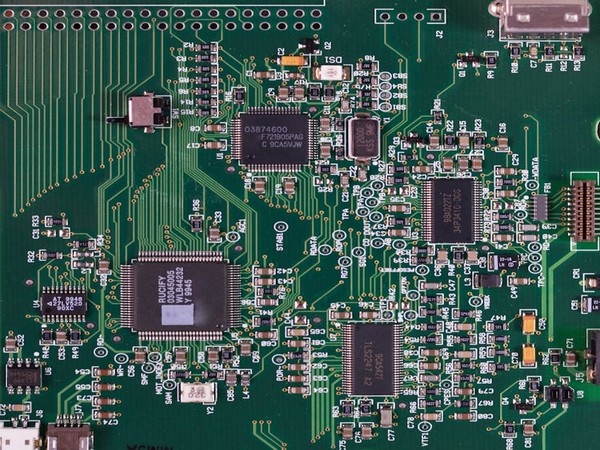
India is on the cusp of a technological revolution, and at the heart of this transformation lies its rapidly growing semiconductor industry.
Projected to grow at a compound annual growth rate (CAGR) of 15% through 2030—more than double the global average—the Indian semiconductor ecosystem is fast emerging as a strategic pillar of the country’s economic and industrial future.
This remarkable trajectory is not just a statistical highlight; it marks a decisive shift in India’s technological capabilities and ambitions.
With the government, industry leaders, and global partners working in tandem, India’s semiconductor industry is no longer a distant dream—it is becoming a vibrant reality.
Government vision driving the momentum
Central to India’s semiconductor success story is a clear, forward-looking policy vision.
The Government of India has made semiconductors a top priority under its broader “Make in India” and “Digital India” initiatives.
The launch of the Rs76,000 crore (approximately $10 billion) Semicon India Programme was a major turning point.
This initiative is designed to attract investment, support domestic manufacturing, and build a resilient chip-making ecosystem.
By offering financial incentives for both design and fabrication, India is actively laying the groundwork for indigenous capabilities in chip production.
The government’s proactive engagement with global semiconductor giants further underscores its commitment to long-term growth and self-reliance in this critical technology sector.
Strategic partnerships with global leaders
India’s semiconductor ascent is bolstered by deepening partnerships with some of the world’s leading chipmakers.
Companies like Micron Technology, Foxconn, AMD, and Applied Materials have already announced major investments in India, recognising the country’s potential as both a manufacturing hub and a vital market.
Micron’s $825 million investment in Gujarat for a semiconductor assembly and testing plant is a flagship example of this trend.
Similarly, Foxconn’s increasing interest in setting up chip fabrication facilities highlights growing global confidence in India’s semiconductor roadmap.
These collaborations not only bring in capital but also invaluable technological expertise, knowledge transfer, and access to global supply chains—essential components for nurturing a robust domestic industry.
A thriving design ecosystem
While much of the attention focuses on manufacturing, India already boasts a world-class semiconductor design ecosystem.
Over 20% of the world’s semiconductor design engineers are based in India, and more than 2,000 integrated circuits (ICs) are designed every year by Indian talent.
Global giants such as Intel, Qualcomm, Nvidia, and Texas Instruments have longstanding R&D and design centres in India, and continue to expand their footprint.
The presence of this highly skilled workforce—combined with growing support from academia and startups—positions India as a leader not just in chip production but also in innovation.
With the rise of artificial intelligence (AI), 5G, and the Internet of Things (IoT), India’s design expertise is set to play an even greater role in shaping the technologies of the future.
Expanding infrastructure and ecosystem
India’s semiconductor journey is underpinned by a rapidly expanding infrastructure and support ecosystem.
States like Gujarat, Tamil Nadu, and Karnataka are emerging as semiconductor powerhouses, offering specialised industrial parks, logistics corridors, and dedicated policy support to attract chipmakers.
The development of semiconductor fabrication units (fabs), packaging plants, and testing facilities is progressing steadily, with significant government and private sector involvement.
Special Economic Zones (SEZs), high-tech clusters, and research centres are all being aligned to foster seamless collaboration between academia, industry, and the startup ecosystem.
Institutions like the India Semiconductor Mission (ISM) are playing a critical role in coordinating efforts, setting long-term goals, and ensuring that all stakeholders—from large corporations to small innovators—are part of India’s semiconductor narrative.
Workforce and talent development
India’s greatest asset in the semiconductor space is undoubtedly its talent pool.
With a young, dynamic workforce and an emphasis on STEM education, India is cultivating the next generation of semiconductor engineers, designers, and technologists.
The government’s focus on skilling initiatives is evident in its collaboration with educational institutions to launch specialised semiconductor curricula and training programmes.
Indian Institutes of Technology (IITs), National Institutes of Technology (NITs), and leading engineering colleges are working closely with industry leaders to bridge the talent gap and ensure workforce readiness.
This investment in human capital ensures that as semiconductor demand rises globally, India will be well-positioned not just to meet it, but to lead it.
Rising global importance
India’s strategic significance in the global semiconductor supply chain is steadily growing.
Amid global efforts to diversify semiconductor manufacturing and reduce dependency on traditional hubs, India offers a unique combination of scale, talent, geopolitical stability, and digital readiness.
As geopolitical uncertainties reshape the global tech landscape, India is being increasingly seen as a trusted partner and an indispensable player.
Countries like the United States, Japan, South Korea, and Taiwan have all expressed strong interest in collaborating with India on semiconductor research, manufacturing, and trade.
Such developments not only enhance India’s global stature but also create a more secure and diversified global chip supply chain.
Startups and innovation at the core
India’s vibrant startup ecosystem is another engine of growth for its semiconductor aspirations.
Dozens of homegrown companies are working on semiconductor IPs, chipsets, embedded systems, and design tools—often supported by government grants and venture capital.
These startups are exploring innovative solutions in automotive electronics, renewable energy, medical devices, and consumer electronics—sectors where semiconductors are increasingly indispensable.
As these ventures mature and scale, they are expected to drive a wave of homegrown innovation that could eventually place India at the forefront of global chip design and application development.
A bright future beckons
With a 15% CAGR projected through 2030, India’s semiconductor industry is well on track to become a cornerstone of the country’s economic and technological growth.
From design to fabrication, and from research to manufacturing, every facet of the industry is witnessing a positive transformation.
What makes this growth story even more promising is its potential to catalyse development across other sectors—automotive, electronics, telecommunications, defence, space, and healthcare—all of which increasingly depend on cutting-edge semiconductors.
India’s emergence as a semiconductor powerhouse is not just about chips; it’s about building a resilient, self-reliant, and future-ready economy.
Share this: